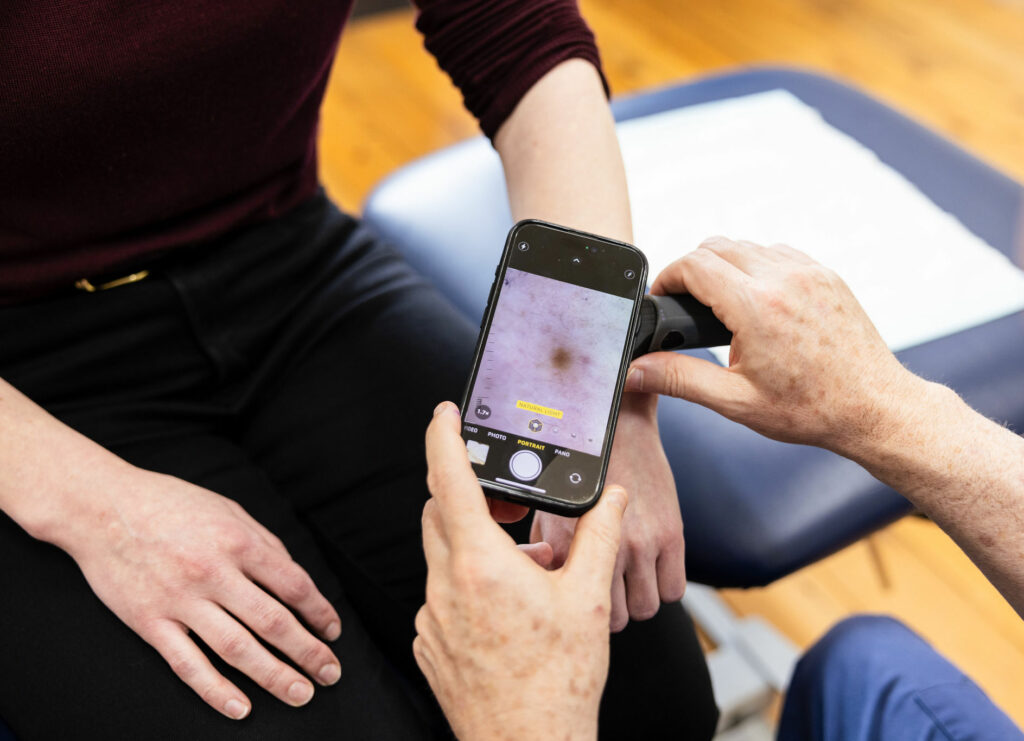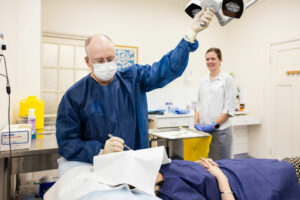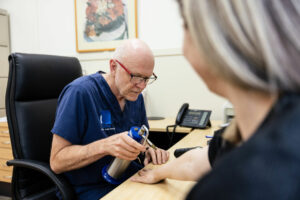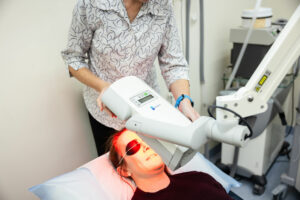Skin cancer diagnosis and treatment

South Coast Dermatology provides a comprehensive service in both the diagnosis and treatment of all forms of skin cancer.
Dr Stanford accepts referrals for prompt assessment of any biopsy-confirmed skin cancers or clinically suspicious lesions to discuss and plan the best treatment for that lesion in that patient. Furthermore, his training allows him to help the highest risk cohort who need timely management of, at times, multiple concurrent skin cancers. We endeavour to provide the most personalised approach to the treatment of premalignant disease (‘sunspots’) using various topical and oral agents to reduce the risk of future skin cancers.
Skin checks are performed by our experienced GPs with a Special Interest (GPSI) in skin. Please note that Dr Stanford no longer conducts routine skin checks.
Treatments we
offer include:
Surgical removal

- We offer a wide range of surgical options including simple excisions and complex flap repairs and skin grafts that can be performed under local anaesthetic at our Kiama rooms
- Whilst local anaesthesia (using various pain-reduction techniques), is usually the best approach for removing skin malignancies, referral for general anaesthesia or sedation is offered when appropriate
- Mohs micrographic surgery is a sub-specialty technique which Dr Stanford performs at Wollongong Day Surgery
Other procedural methods

- Cryotherapy uses the freezing effect of liquid nitrogen to destroy pre-cancerous and cancer cells
- Serial curettage & electrosurgery uses a “cutting spoon” and heat to remove skin cancers. It is efficient in removing multiple low-grade lesions at suitable sites without the need for suturing.
Topical modalities (creams)
- We may prescribe a cream such as 5-fluorouracil (eg. Efudix) or imiquimod (eg. Aldara) to treat areas of pre-cancerous disease or individual low grade skin cancers. Patients are carefully selected, educated and supervised in using the appropriate protocol.
Photodynamic therapy (PDT)

- Photodynamic therapy uses a cream or spray in combination with a light source e.g. red light or daylight, to treat either fields of pre-cancerous disease or low-grade individual skin cancers
- Our highly experienced nurses are trained to administer PDT using evidence-based protocols
- This technique can be useful for delicate sites such as lips and eyelids for the best cosmetic outcomes
Intralesional chemotherapy
- Occasionally this specialised option may have a role in treating large lesions in awkward locations
- A chemotherapy agent such as methotrexate or 5-fluorouracil is injected directly into the skin cancer
Treatment of advanced cancers
- In the case of the most advanced or complex cancers, our doctors work collaboratively with a range of other relevant specialists in the region, in particular oculoplastics and surgical subspecialists (e.g. plastics, head & neck, ear-nose-throat), as well as radiation and medical oncologists. We liaise closely with our subspecialist dermatopathologists regarding any of the more challenging cases we treat.
